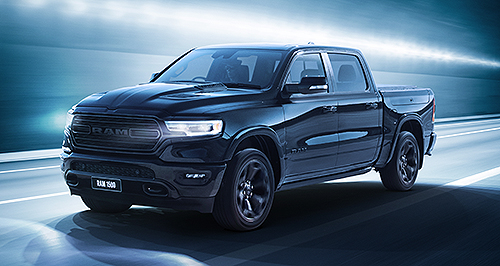News - Industry News$48b plan to electrify StellantisCharging: EV city cars to join utes and performance cars as Peugeot-Citroen and Fiat-Chrysler parent pushes fossil fuels aside and plugs in World’s 4th biggest car-maker unveils huge plans for EVs and battery factories9 Jul 2021 By NEIL DOWLING THE world’s fourth biggest car-maker, Stellantis, has unveiled an ambitious $A48 billion plan to electrify its 14-brand line up, including the launch of hydrogen fuel-cell commercial vehicles and build five dedicated battery plants in Europe and the US.
The company wants four platforms for its proposed battery electric vehicles (BEVs) that will be part of every segment, from micro-cars to vans, SUVs and 4x4 utes.
Stellantis, formed in January through the merger of PSA Groupe (Peugeot, Citroen, Opel, Vauxhall) and Fiat Chrysler Automobiles (including Jeep, Fiat, Chrysler, Ram and Alfa Romeo), said the plan was “a wonderful opportunity to reset the clock and start a new race”.
At the company’s ‘EV Day 2021’ webcast this week, chief executive Carlos Tavares said “the group is at full speed on its electrification journey”.
Stellantis said it was targeting more than 70 per cent of sales in Europe and over 40 per cent in the US to be low-emission vehicles – either BEV or hybrid electric – by 2030.
Furthermore, it is also aiming to make the total cost of owning an EV equal to that of a petrol-powered model by 2026.
The EVs will be built on four dedicated platforms and boast driving ranges of 500-800km on a single charge and fast-charging capabilities of 32km per minute.
The platforms are termed STLA, with STLA Small for city cars, through to STLA Large for larger monocoque vehicles. The STLA Frame is the body-on-frame platform and will be used by BEV utes and 4x4s, starting with the Ram 1500 EV expected in 2024.
Even a performance car is planned with an electric Dodge coupe expected by 2024.
All 14 of its vehicle brands will offer BEVs with plans for hydrogen fuel-cell electric commercial vehicles ready as early as the end of this year.
The proposed five battery plants will include one at its engine plant in Termoli, Italy, joining previously announced factories in Germany and France.
Stellantis is yet to announce its partner in the battery factory, but rumours suggest Samsung is planning a US factory and could work with the car-maker.
It has reinforced its commitment to BEVs by signing two memorandums of understanding with two lithium processors in North America and Europe to ensure supplies of the metal.
Stellantis said it wants to have more than 130 gigawatt hours (GWh) of battery capacity by 2025 and more than 260GWh by 2030.
STLA Small vehicles will use packs with capacities between 37kWh and 82kWh; STLA Medium EVs will carry between 87kWh and 104kWh; STLA Large will use packs of 101kWh and 118kWh, while STLA Frame will require between 159kWh and 200kWh packs.
With lithium supply from the source and multiple battery factories, Stellantis said it wants to cut battery pack costs by more than 40 per cent from 2020 to 2024 and by more than an extra 20 per cent by 2030.
It outlined plans to use two battery chemistries by 2024 – a high energy-density option and a nickel cobalt-free alternative. By 2026, it intends to introduce solid-state batteries.
The production volumes of each platform will be up to two million units a year, with commonality of design and parts being a core of the production speed and low cost.
There will be three main drivetrains suitable for front-wheel drive, rear-wheel drive or all-wheel drive vehicles, plus a 4xe for plug-in hybrid Jeeps that use electric drive for one axle pair.
Stellantis said power output will range from 70kW up to 330kW with the most powerful drive modules operating at 800 volts compared with the others at 400 volts.
There will be a single common inverter across all three drive modules, which Stellantis says can operate at both voltages.
The Stellantis webcast followed a separate announcement made by its European rival Renault that said 90 per cent of its main brand models would be all-electric by 2030, countering a previous report that said this percentage would include hybrids.
In other EV news, Volkswagen said it predicts BEVs to account for 55 per cent of its total sales in Europe by 2030.
General Motors said last month it planned to spend $A47 billion by 2025 on electric and self-driving vehicles.  |
Click to shareIndustry News articlesMotor industry news |














Facebook Twitter Instagram